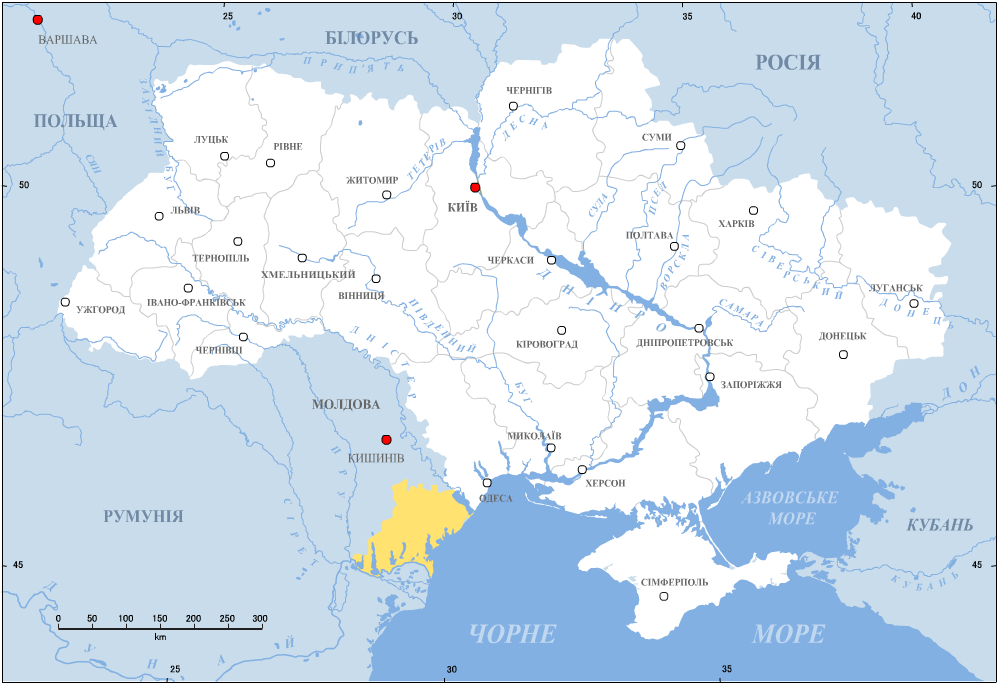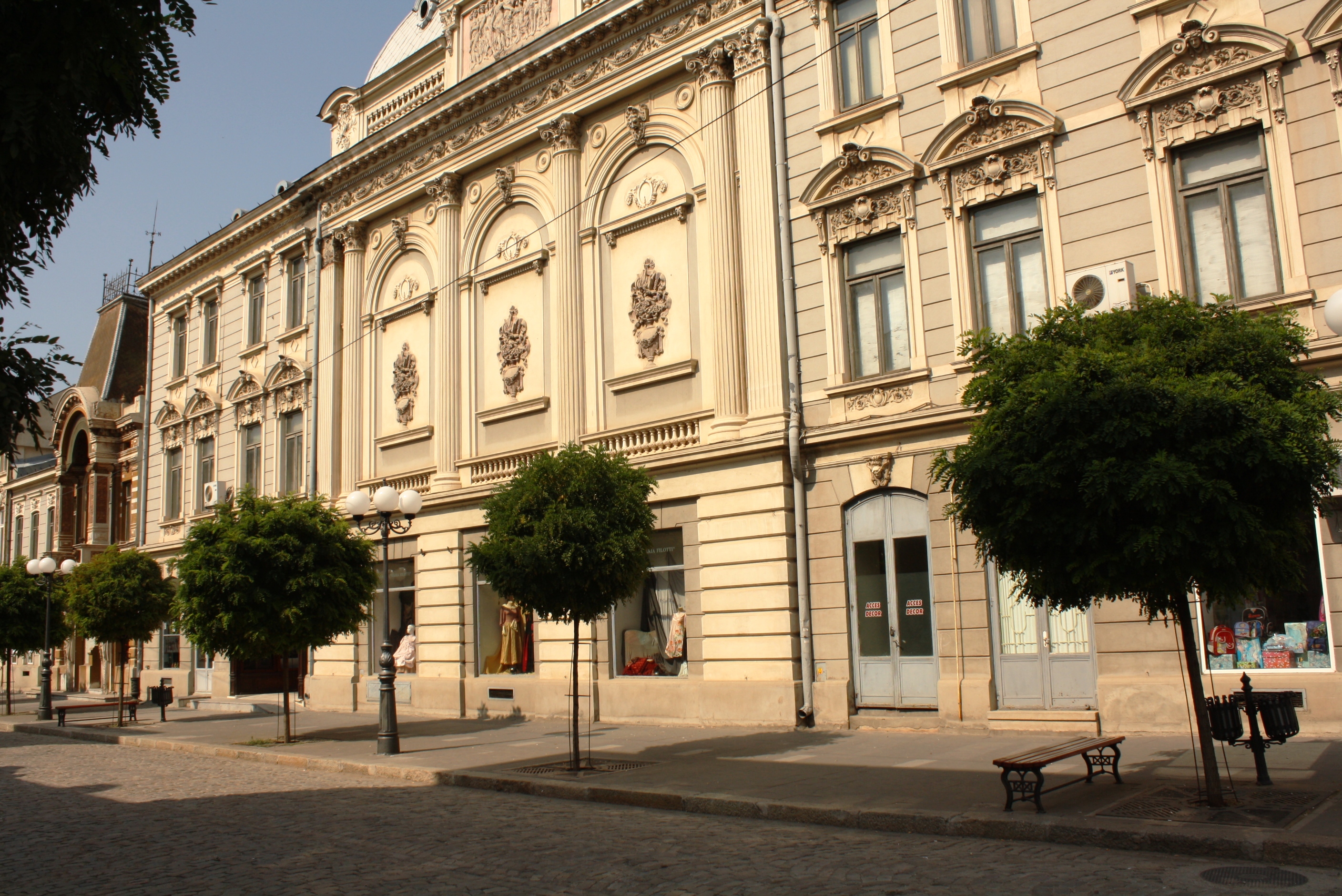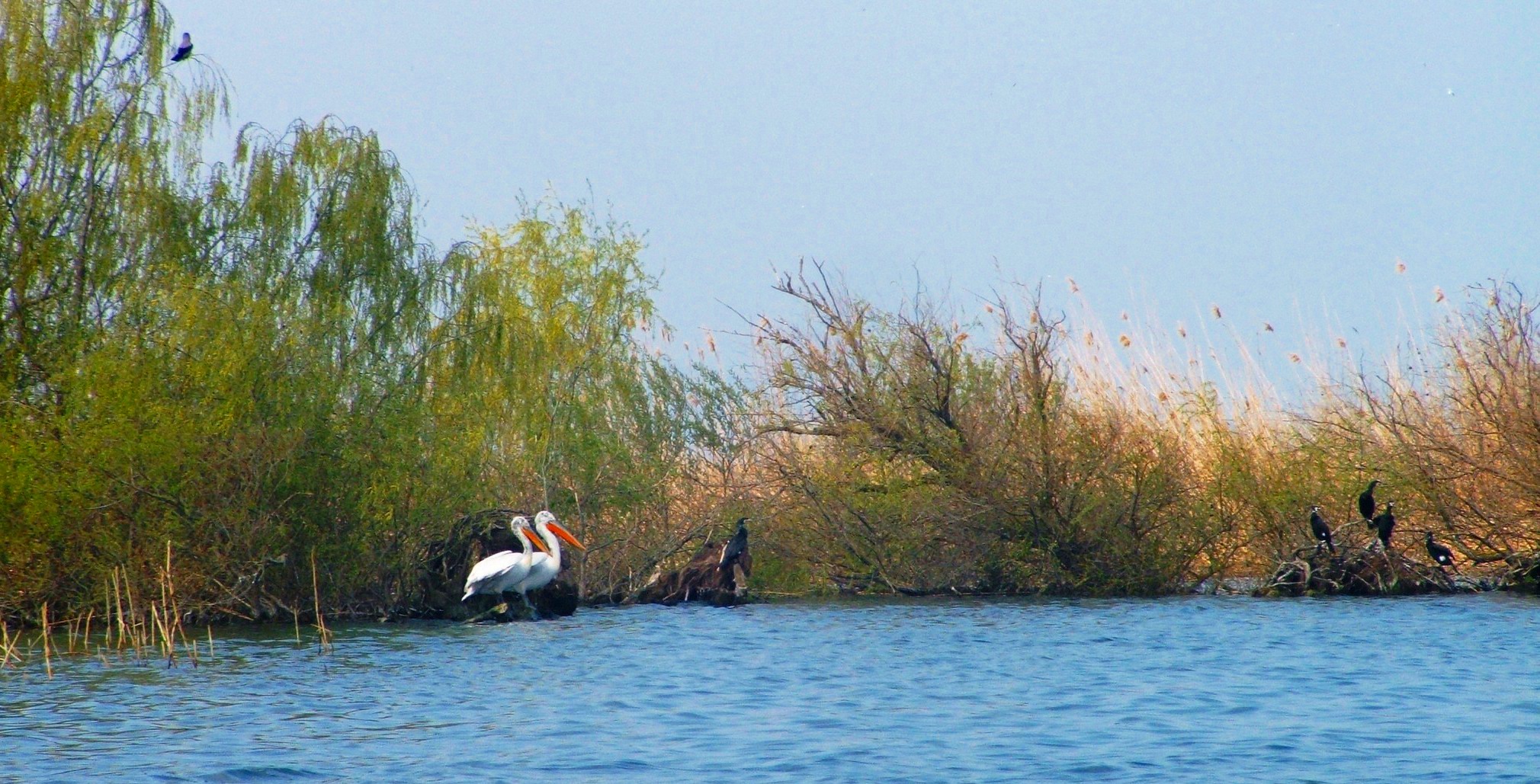|
Ținutul Dunării
Ținutul Dunării (or Ținutul Dunărea de Jos) was one of the ten Romanian ''ținuturi'' ("lands") founded in 1938, after King Carol II initiated an institutional reform by modifying the 1923 Constitution and the law of territorial administration. Named after the Danube River and extending over historical areas of Moldavia (into Moldavia-proper, as well as Budjak and Bessarabia), parts of Northern Dobruja (with the Danube Delta), and an area of Wallachia around Brăila. Its capital was the city of Galați. Ținutul Dunării ceased to exist following the Soviet occupation of Bessarabia and northern Bukovina and the king's abdication in 1940. Coat of arms The coat of arms consists of ten bars, five of azure and five of murrey, representing the former ten counties (''județe'') of Greater Romania (71 in total) which it included. Over the bars there is an argent bend, of wavy shape, reminding of the Danube. Former counties incorporated After the 1938 Administrative and Constitution ... [...More Info...] [...Related Items...] OR: [Wikipedia] [Google] [Baidu] |
Countries Of The World
The following is a list providing an overview of sovereign states around the world with information on their status and recognition of their sovereignty. The 206 listed states can be divided into three categories based on membership within the United Nations System: 193 member states of the United Nations, UN member states, 2 United Nations General Assembly observers#Present non-member observers, UN General Assembly non-member observer states, and 11 other states. The ''sovereignty dispute'' column indicates states having undisputed sovereignty (188 states, of which there are 187 UN member states and 1 UN General Assembly non-member observer state), states having disputed sovereignty (16 states, of which there are 6 UN member states, 1 UN General Assembly non-member observer state, and 9 de facto states), and states having a political status of the Cook Islands and Niue, special political status (2 states, both in associated state, free association with New Zealand). Compi ... [...More Info...] [...Related Items...] OR: [Wikipedia] [Google] [Baidu] |
Budjak
Budjak or Budzhak (Bulgarian and Ukrainian: Буджак; ro, Bugeac; Gagauz and Turkish: ''Bucak''), historically part of Bessarabia until 1812, is a historical region in Ukraine and Moldova. Lying along the Black Sea between the Danube and Dniester rivers, this sparsely populated multi-ethnic 600,000-people region of is located in the southern part of historical Bessarabia. Nowadays, the larger part of the region is included in Ukraine's Odesa Oblast, while the rest is included in the southern districts of Moldova. The region is bordered to the north by the rest of Moldova, to the west and south by Romania, and to the east by the Black Sea and the rest of Ukraine. Name and geography Historically, Budjak was the southeastern steppe region of Moldavia. Bordered by the northern Trajan's Wall at its north end, by the Danube river and Black Sea to its south, by Tigheci Hills (just east of the Prut River) to the west, and Dniester River to the east, it was known as ''histori ... [...More Info...] [...Related Items...] OR: [Wikipedia] [Google] [Baidu] |
Brăila
Brăila (, also , ) is a city in Muntenia, eastern Romania, a port on the Danube and the capital of Brăila County. The ''Sud-Est'' Regional Development Agency is located in Brăila. According to the 2011 Romanian census there were 180,302 people living within the city of Brăila, making it the 11th most populous city in Romania. The current mayor of Brăila is . History Origins Before 14th century, a small village existed in the place of today's Brăila, probably inhabited by fishermen and small merchants.Rădvan, p.248 The village fell to the Mongols during the 1241 Mongol invasion of Europe and it was under direct control of the rulers of Argeș in mid-14th century. A settlement called ''Drinago'' was found in several 14th century Catalan and Castillian portolan charts ( Angelino de Dalorto, 1325/1330 and Angelino Dulcert, 1339), as well as in the ''Book of Knowledge of All Kingdoms''. This may have been an erroneous transcription of ''Brillago'', a name which was l ... [...More Info...] [...Related Items...] OR: [Wikipedia] [Google] [Baidu] |
Wallachia
Wallachia or Walachia (; ro, Țara Românească, lit=The Romanian Land' or 'The Romanian Country, ; archaic: ', Romanian Cyrillic alphabet: ) is a historical and geographical region of Romania. It is situated north of the Lower Danube and south of the Southern Carpathians. Wallachia is traditionally divided into two sections, Muntenia (Greater Wallachia) and Oltenia (Lesser Wallachia). Dobruja could sometimes be considered a third section due to its proximity and Dobruja#Wallachian rule, brief rule over it. Wallachia as a whole is sometimes referred to as Muntenia through identification with the larger of the two traditional sections. Wallachia was founded as a principality in the early 14th century by Basarab I of Wallachia, Basarab I after a rebellion against Charles I of Hungary, although the first mention of the territory of Wallachia west of the river Olt River, Olt dates to a charter given to the voivode Seneslau in 1246 by Béla IV of Hungary. In 1417, Wallachia was fo ... [...More Info...] [...Related Items...] OR: [Wikipedia] [Google] [Baidu] |
Danube Delta
The Danube Delta ( ro, Delta Dunării, ; uk, Дельта Дунаю, Deľta Dunaju, ) is the second largest river delta in Europe, after the Volga Delta, and is the best preserved on the continent. The greater part of the Danube Delta lies in Romania (Tulcea County), with a small part in Ukraine (Odessa Oblast). Its approximate surface area is , of which is in Romania. With the lagoons of Razim–Sinoe ( with water surface), located south of the main delta, the total area of the Danube Delta is . The Razim–Sinoe lagoon complex is geologically and ecologically related to the delta proper; the combined territory is listed as a World Heritage Site. Geography and geology The modern Danube Delta began to form after 4000 BCE in a bay of the Black Sea when the sea rose to its present level. A sandy barrier blocked the Danube bay where the river initially built its delta. Upon filling the bay with sediment, the delta advanced outside this barrier-blocked estuary after 3500 BCE, b ... [...More Info...] [...Related Items...] OR: [Wikipedia] [Google] [Baidu] |
Danube River
The Danube ( ; ) is a river that was once a long-standing frontier of the Roman Empire and today connects 10 European countries, running through their territories or being a border. Originating in Germany, the Danube flows southeast for , passing through or bordering Austria, Slovakia, Hungary, Croatia, Serbia, Romania, Bulgaria, Moldova, and Ukraine before draining into the Black Sea. Its drainage basin extends into nine more countries. The largest cities on the river are Vienna, Budapest, Belgrade and Bratislava, all of which are the capitals of their respective countries; the Danube passes through four capital cities, more than any other river in the world. Five more capital cities lie in the Danube's basin: Bucharest, Sofia, Zagreb, Ljubljana and Sarajevo. The fourth-largest city in its basin is Munich, the capital of Bavaria, standing on the Isar River. The Danube is the second-longest river in Europe, after the Volga in Russia. It flows through much of Central and Sou ... [...More Info...] [...Related Items...] OR: [Wikipedia] [Google] [Baidu] |
1923 Constitution Of Romania
The 1923 Constitution of Romania, also called the Constitution of Union, was intended to align the organisation of the state on the basis of universal male suffrage and the new realities that arose after the Great Union of 1918. History Four draft constitutions existed: one belonging to the National Liberal Party, written with contributions from Ion I. C. Brătianu; one composed by R. Boilă at Cluj, under the influence of the Romanian National Party; one by Constantin Stere, representing the views of the Peasants' Party; and a fourth by C. Berariu. Except for Stere's proposal, which involved a unicameral legislature, proportional representation and popular consultation through the plebiscite, the other three were inspired (when it came to political organisation) by the 1866 Constitution. The Liberals came to power in 1922 and managed to push through their own draft, which was approved 247-8 (with two abstentions) in the Chamber of Deputies on March 26, 1923, and the next da ... [...More Info...] [...Related Items...] OR: [Wikipedia] [Google] [Baidu] |
Carol II Of Romania
Carol II (4 April 1953) was King of Romania from 8 June 1930 until his forced abdication on 6 September 1940. The eldest son of Ferdinand I, he became crown prince upon the death of his grand-uncle, King Carol I in 1914. He was the first of the Hohenzollern kings of Romania to be born in the country; both of his predecessors had been born in Germany and came to Romania only as adults. As such, he was the first member of the Romanian branch of the Hohenzollerns who spoke Romanian as his first language, and was also the first member of the royal family to be raised in the Orthodox faith. Carol was also a fan of football, being the Romanian Football Federation's president for almost one year from 1924 until 1925. Carol's first controversy was his desertion from the army during World War I, followed by his marriage to Zizi Lambrino, which resulted in two attempts to give up the rights of succession to the royal crown of Romania, refused by King Ferdinand. After the dissolution ... [...More Info...] [...Related Items...] OR: [Wikipedia] [Google] [Baidu] |
King Of Romania
The King of Romania (Romanian: ''Regele României'') or King of the Romanians (Romanian: ''Regele Românilor''), was the title of the monarch of the Kingdom of Romania from 1881 until 1947, when the Romanian Workers' Party proclaimed the Romanian People's Republic following Michael I's forced abdication. History The state had been internationally recognized as a principality since 1862, after the creation of the United Principalities, a personal union between Moldavia and Wallachia, at that time vassal states of the Ottoman Empire. Alexander I became ''domnitor'' (ruling prince) after the official unification of the two formerly separate states, being elected prince of both states in 1859. He was deposed in 1866 by a broad coalition of the main political parties, after which parliament offered the throne to Prince Karl of Hohenzollern-Sigmaringen who subsequently became the new "Domnitor of Romania" (as Carol I). Romania's independence from the Ottoman Empire was recognized in ... [...More Info...] [...Related Items...] OR: [Wikipedia] [Google] [Baidu] |
Romania
Romania ( ; ro, România ) is a country located at the crossroads of Central Europe, Central, Eastern Europe, Eastern, and Southeast Europe, Southeastern Europe. It borders Bulgaria to the south, Ukraine to the north, Hungary to the west, Serbia to the southwest, Moldova to the east, and the Black Sea to the southeast. It has a predominantly Temperate climate, temperate-continental climate, and an area of , with a population of around 19 million. Romania is the List of European countries by area, twelfth-largest country in Europe and the List of European Union member states by population, sixth-most populous member state of the European Union. Its capital and largest city is Bucharest, followed by Iași, Cluj-Napoca, Timișoara, Constanța, Craiova, Brașov, and Galați. The Danube, Europe's second-longest river, rises in Germany's Black Forest and flows in a southeasterly direction for , before emptying into Romania's Danube Delta. The Carpathian Mountains, which cross Roma ... [...More Info...] [...Related Items...] OR: [Wikipedia] [Google] [Baidu] |
Eastern European Summer Time
Eastern European Summer Time (EEST) is one of the names of the UTC+03:00 time zone, which is 3 hours ahead of Coordinated Universal Time. It is used as a summer daylight saving time in some European and Middle Eastern countries, which makes it the same as Arabia Standard Time, East Africa Time, and Moscow Time. During the winter periods, Eastern European Time ( UTC+02:00) is used. Since 1996, European Summer Time has been applied from the last Sunday in March to the last Sunday in October. Previously, the rules were not uniform across the European Union. Usage The following countries and territories use Eastern European Summer Time during the summer: * Belarus, Moscow Summer Time in years 1981–89, regular EEST from 1991-2011 * Bulgaria, regular EEST since 1979 * Cyprus, regular EEST since 1979 ( Northern Cyprus stopped using EEST in September 2016, but returned to EEST in March 2018) * Estonia, Moscow Summer Time in years 1981–88, regular EEST since 1989 * Finland, regu ... [...More Info...] [...Related Items...] OR: [Wikipedia] [Google] [Baidu] |
Eastern European Time
Eastern European Time (EET) is one of the names of UTC+02:00 time zone, 2 hours ahead of Coordinated Universal Time. The zone uses daylight saving time, so that it uses UTC+03:00 during the summer. A number of African countries use UTC+02:00 all year long, where it is called Central Africa Time (CAT), although Egypt and Libya also use the term ''Eastern European Time''. The most populous city in the Eastern European Time zone is Cairo, with the most populous EET city in Europe being Athens. Usage The following countries, parts of countries, and territories use Eastern European Time all year round: * Egypt, since 21 April 2015; used EEST ( UTC+02:00; UTC+03:00 with daylight saving time) from 1988–2010 and 16 May–26 September 2014. See also Egypt Standard Time. * Kaliningrad Oblast (Russia), since 26 October 2014; also used EET in years 1945 and 1991–2011. See also Kaliningrad Time. * Libya, since 27 October 2013; switched from Central European Time, which was u ... [...More Info...] [...Related Items...] OR: [Wikipedia] [Google] [Baidu] |






